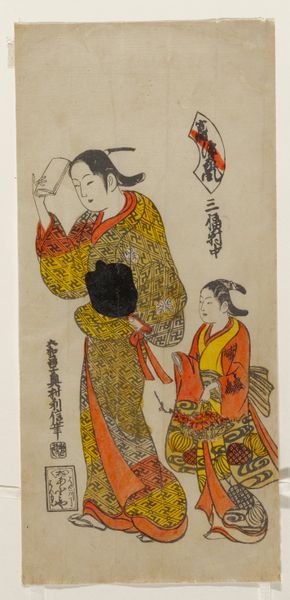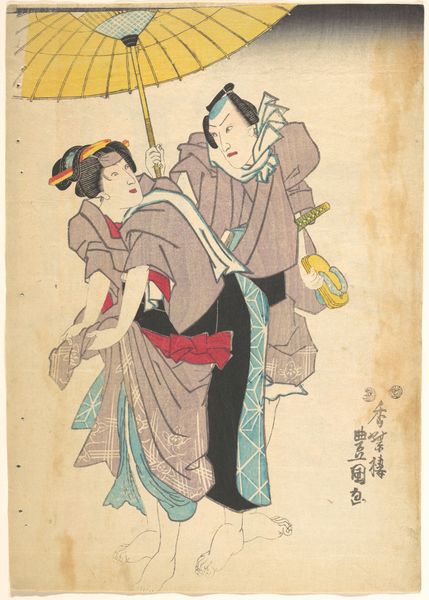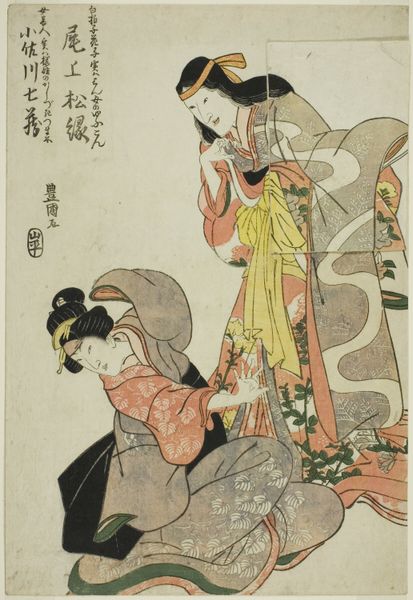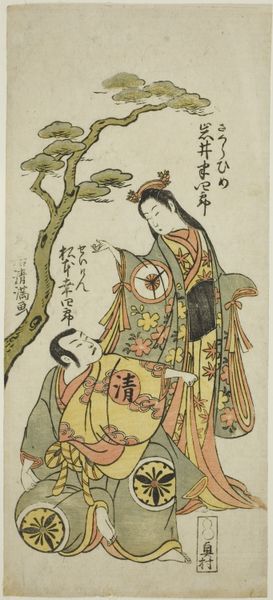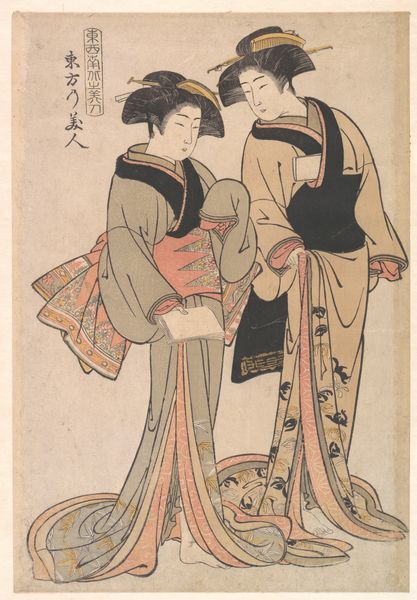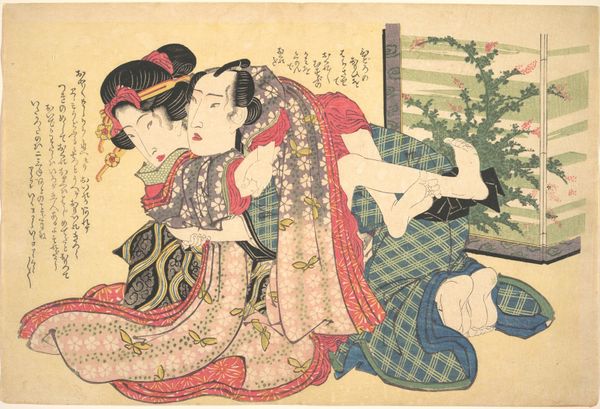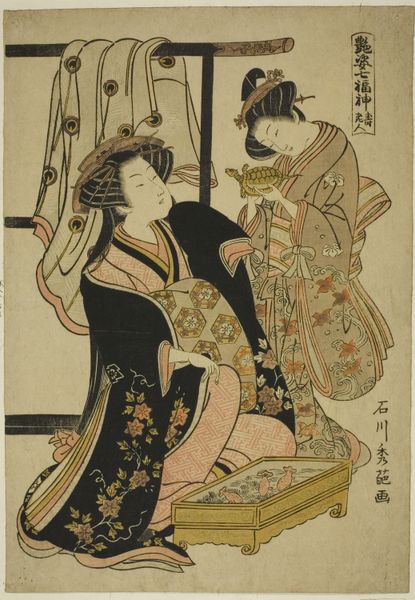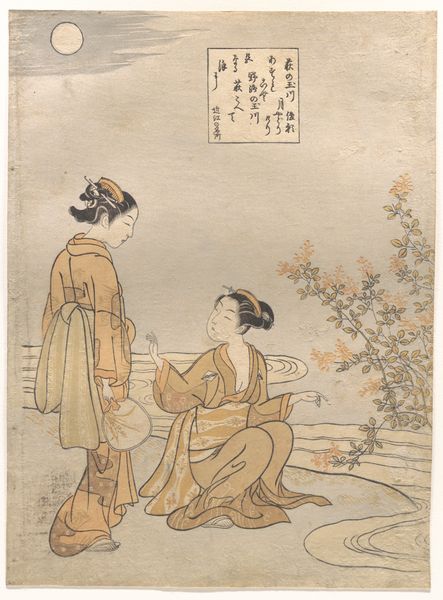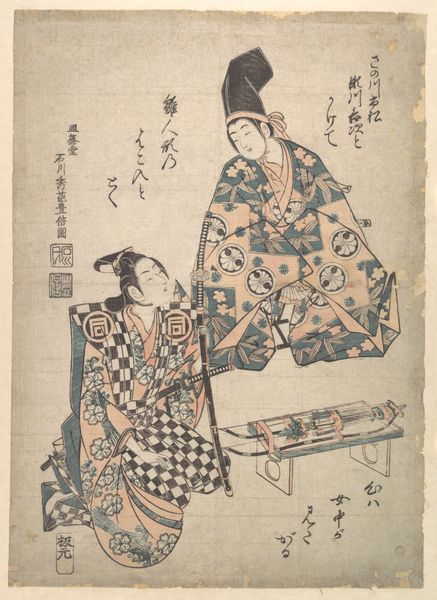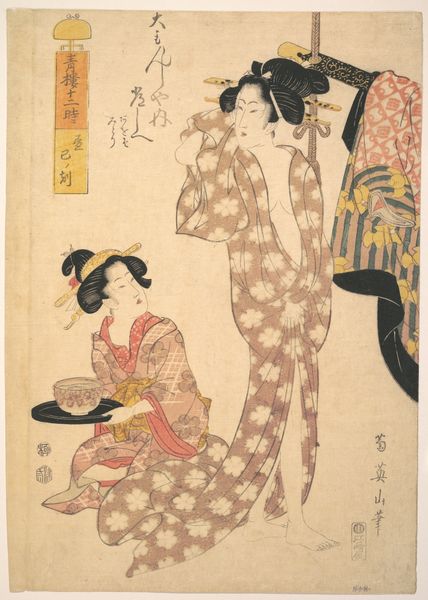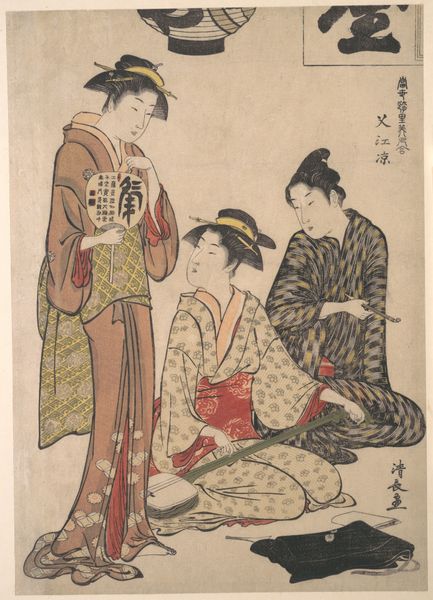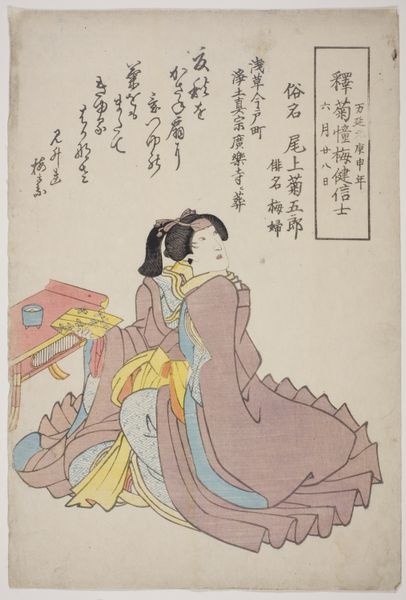
#
portrait
# print
#
asian-art
#
ukiyo-e
#
figuration
#
genre-painting
Copyright: Public Domain
Curator: Here we have "Memorial Portrait of the Actor Bando Shuka I," created in 1855. It's an ukiyo-e print, unsigned, and now residing here at the Art Institute of Chicago. What springs to mind when you first gaze upon it? Editor: Melancholy, definitely melancholy. There's something so raw and vulnerable about the figures, even with the formality of the print. It’s like peering into a frozen moment of theatrical intensity, a silent drama unfolding. Curator: Well, that raw feeling may connect with the understanding of this print as a memorial following the actor's passing. You know, considering ukiyo-e’s rise alongside the merchant class and its production techniques… it reminds us that even celebrity images became commodities for mass consumption. Think of it: woodblocks, inks, paper, the labour involved... Editor: Right, each impression connecting this celebrated Kabuki performer with an audience mourning his loss, which makes that melancholy all the more tangible. I'm also struck by the interplay of textures. That pale blue robe of the standing figure contrasts with the rich pattern and dark garment of the figure seated below, creating visual depth and symbolic resonance. Curator: Indeed! The use of the woodblock allows for crisp lines defining the subjects. But notice the absence of sharp, photographic details? This deliberate choice makes you ask whether the subject is grounded in reality or instead conjured from public memory. Ukiyo-e served diverse purposes - from disseminating information to shaping social consciousness through popular themes such as beauty or the stage. Editor: I find it captivating how art, even when commercially produced, holds the power to communicate the delicate balance between life, loss, and remembrance across time and cultures. Almost like catching stardust, isn't it? Curator: Absolutely! Reflecting on this print as both a commemorative object and a piece of mass culture reveals interesting details. We remember both an actor and the context in which they rose to fame, all encapsulated within this artwork’s creation, circulation and perception. Editor: Yes. Next time I find myself in mourning, maybe I should commission a beautiful print to catch all these elusive feelings instead of simply lighting a candle. It has a kind of permanence that I find comforting.
Comments
No comments
Be the first to comment and join the conversation on the ultimate creative platform.
